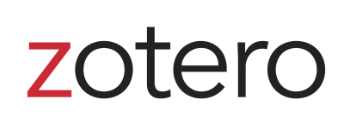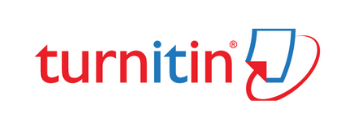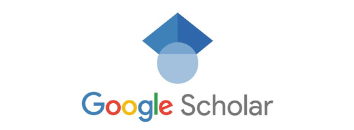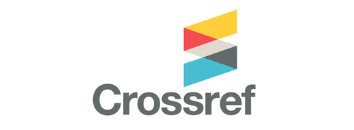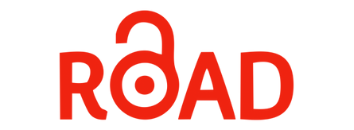Remote System, Does It Have an Impact on the Performance of Zoomers Employees?
DOI:
https://doi.org/10.24002/kinerja.v27i2.6832Keywords:
remote system, work-life balance, work productivity, employee performanceAbstract
The initial concept of a remote system (WFH) regulates flexible working hours, which can help employees determine work-life balance. The remote system gives employees the freedom to use their creativity to complete their tasks and responsibilities, which will greatly affect employee performance and work productivity. Central Statistics Agency (2020) shows data that the Zoomers generation is recorded as the generation that controls the next industry as active workers. The research method uses quantitative methods. This study uses the Smart-PLS 3.0 statistical tool with a sample of employees belonging to the Zoomers generation. Of the five hypotheses, three hypotheses were accepted, and two were rejected. The findings of this study can be an insight for businesspeople on whether the WFH pattern is still needed in increasing employees' productivity and performance.
References
Agha, K., Azmi, T., and Irfan, A., 2017. Work-life balance and job satisfaction: An empirical study focusing on higher education teachers in Oman. International Journal of Social Science and Humanity, 7(3), pp.164-171.
Agrawal, S., Smet, Aaron, A. D., Lacroix, S., and Reich, A., 2020. COVID-19 and reskilling the workforce | McKinsey. Available at: https://www.mckinsey.com/capabilities/people-and-organizational-performance/our-insights/to-emerge-stronger-from-the-covid-19-crisis-companies-should-start-reskilling-their-workforces-now.
Alimuddin, I. K., 2021. Pengaruh work from home terhadap kinerja karyawan pada masa pandemi COVID-19, Studi Kasus Pada Bank BTN. YUME: Journal of Management, Vol. 4, Issue 2, 323-332.
Anugrah, P. G. and Priyambodo, A. B., 2021. Peran work-life balance terhadap kinerja karyawan yang menerapkan work from home (WFH) di masa pandemi COVID-19: studi literatur. In Seminar Nasional Psikologi dan Ilmu Humaniora (SENAPIH) (Vol. 1, No. 1, pp. 340-349).
Aropah, V. D., Sarma, M., and Sumertajaya, I., 2020. Factors affecting employee performance during work from home. International Research Journal of Business Studies, Vol. 13, No. 2, 201-214.
Asio, J. M., 2021. Determinants of work productivity among selected tertiary education employees: A Pre COVID-19 Pandemic Analysis. International Journal of Didactical Studies, Vol. 2, Issue 1.
Badan Pusat Statistik, 2020. Hasil Sensus Penduduk 2020. Jakarta: Badan Pusat Statistik.
Bai, J. J., Jin, W., Steffen, S., and Wan, C., 2020. The future of work: Work from home preparedness and firm resilience during the COVID-19 pandemic. SRN Electronic Journal, 1-20.
Boland, J., Banks, S., Krabbe, R., Lawrence, S., Murray, T., Henning, T., and Vandenberg, M., 2021. A COVID-19-era rapid review: using Zoom and Skype for qualitative group research | PHRP. Available at: https://www.phrp.com.au/issues/using-zoom-and-skype-in-qualitative-group-research/.
Commission, N.Z.S.S., 2005. Work-life Balance: A Resource for the State Services. State Services Commission.
Crosbie, T. and Moore, J., 2004. Work–life balance and working from home. Social Policy and Society, 3(3), pp.223-233.
Deole, S. S., Deter, M., and Huang, Y., 2021. Home Sweet Home: Working from home and employee performance during the COVID-19 pandemic in the UK. GLO Discussion Paper, No. 791, 1-35.
Dewayani, T., 2020. Bekerja dari Rumah (Work From Home) Dari Sudut Pandang Unit Kepatuhan Internal. Available at: https://www.djkn.kemenkeu.go.id/artikel/baca/13014/Bekerja-dari-Rumah-Work-From-Home-Dari-Sudut-Pandang-Unit-Kepatuhan-Internal.html.
Dockery, A. M., and Bawa, S., 2014. Is working from home good work or bad work? Evidence from Australian employees. Australian Journal of Labour Economics, Vol. 17, No. 2, 163-190.
Mea, M.H.D. and Hyronimus, H., 2020. Pengaruh Work From Home terhadap work-life balance pekerja perempuan di Kota Ende. JMBI UNSRAT (Jurnal Ilmiah Manajemen Bisnis dan Inovasi Universitas Sam Ratulangi)., 7(2).
Ekananta, A., 2021. Organizational Development. Jakarta: One CHRP.
Elorus, 2018. Metrics and Key Performance Indicators for Employee Evaluation. Available at: https://www.elorus.com/blog/metrics-and-kpis-necessary-to-measure-employee-performance/.
Farrell, K., 2017. Working from home: A double-edged sword. Royal Society of Medicine, 1-26.
Gaidhane, S., Khatib, N., Zahiruddin, Q.S., Gaidhane, A., Telrandhe, S. and Godhiwal, P., 2020. Depression, anxiety and stress among the general population in the time of COVID-19 lockdown: A cross-sectional study protocol. International Journal of Research in Pharmaceutical Sciences, pp.360-364.
Govender, L., Migiro, S., and Kyule, A., 2018. Flexible work arrangements, job satisfaction and performance. Journal of Economics and Behavioral Studies, 268-277.
Hair, J., Anderson, R., and Tatham, R., 2018. Multivariate Data Analysis 5th Edition. Upper Saddle River, New Jersey: Prentice Hall.
Hasibuan, M., 2014. Manajemen Sumber Daya Manusia. Jakarta: Bumi Aksara.
Hersey, P., Kenneth, B. H., and Dewey, E., 1996. Management of Organizational Behavior. New Jersey: Prentice Hall, Inc.
Mathis, R. L. and Jackson, J. H., 2001. Human Resources. New York: The Free Press.
Mendis, M.D.V.S. and Weerakkody, W.A.S., 2017. The impact of work life balance on employee performance with reference to telecommunication industry in Sri Lanka: a mediation model. Kelaniya Journal of Human Resource Management, 12(1), pp.72-100.
Mischke, J., Woetzel, J., Smit, S., Manyika, J., Birshan, M., Windhagen, E., Schubert, J., Hieronimus, S., Dagorret, G. and Noguer, M. C., 2021. Will Productivity and Growth Return After the COVID‑19 Crisis? Available at: Mc.Kinsey&Com: https://www.mckinsey.com/industries/public-and-social-sector/our-insights/will-productivity-and-growth-return-after-the-covid-19-crisis
Mungkasa, O., 2020. Bekerja dari rumah (working from home/WFH): Menuju tatanan baru era pandemi COVID-19. Jurnal Perencanaan Pembangunan: The Indonesian Journal of Development Planning, 4(2), pp.126-150.
Nguyen, P., Anh Hoang, N., Ngo, T., and Nguyen, P. V., 2019. The relationship between productivity and firm's performance: Evidence from listed firms in vietnam stock exchange. The Journal of Asian Finance, Economics and Business, 6(3), pp.131-140.
Prakash, A., Jha, S., Prasad, K., and Singh, A., 2017. Productivity, quality, and business performance: An empirical study. International Journal of Productivity and Performance Management, 66(1), 78-91.
Prasetyaningtyas, S. W., Heryanto, C., Nurfauzi, N. F., and Tanjung, B. S., 2021. The effect of working from home on employee productivity in banking industry. Journal of Applied Management, 19(3), 507-521.
Purnadi, P., 2019. Human Capital Management. Jakarta: Pungki Purnadi Associates.
Sekaran, U., and Bougie, R., 2016. Research Methods for Business. West Sussex: Wiley.
Sulastri, L., 2021. Pengaruh work from home terhadap kinerja karyawan di masa pandemi COVID-19. Akselerasi: Jurnal Ilmiah Nasional, 3(3), 20-26.
Todd, S., 2022. 25 Factors That Affect Workers Productivity (How do YOU Compete?). Open Sourced Workplace. Available at: https://opensourcedworkplace.com/news/25-factors-that-affect-workers-productivity.
Yoshio, A., 2021. Masa Depan Bekerja Jarak Jauh, Pilih ke Kantor atau di WFH? Available at: https://katadata.co.id/anshar/berita/6167b80ea1cfc/masa-depan-bekerja-jarak-jauh-pilih-ke-kantor-atau-di-wfh.
Yuniarti, R., Irwansyah, R., Hasyim, M.A.N., Riswandi, P., Septania, S., Rochmi, A., Febrianty, F., Wijaya, I.G.B., Handayani, F.S., Bambang, B. and Setiorini, A., 2021. Kinerja Karyawan (Tinjauan Teori dan Praktis). Bandung: Widina Bhakti Persada.
Yusuf, B., 2015. Manajemen Sumber Daya Manusia di Lembaga Keuangan Syariah. Jakarta: Raja Grafindo Persada.
Živčicová, E., Bulková, K., and Masárová., 2017. Comparison of the selected indicators of work life balance in European Union Countries. Economics and Sociology, 10(1), 222-231.
Downloads
Published
Issue
Section
License
Copyright (c) 2023 Daniel Joel Immanuel Kairupan

This work is licensed under a Creative Commons Attribution 4.0 International License.




